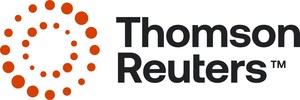ANN ARBOR, Mich., Feb. 28, 2012 /PRNewswire/ -- Price variation for common medical procedures costs Americans with employer-sponsored insurance as much as $36 billion a year, according to a white paper published today by Thomson Reuters.
(Logo: http://photos.prnewswire.com/prnh/20090507/NY12658LOGO )
The report uses claims data for Americans with employer-sponsored insurance to analyze variation in prices nationwide for a set of 300 "shoppable" procedures (high-volume procedures that consumers would plan for and schedule in advance, such as a mammogram, knee replacement or MRI). It finds prices in some markets that were two-to-three times higher than the median price for the same procedure. The paper also suggests best practices for implementing successful price transparency initiatives to combat this wide variance in cost.
"In real world terms, this data tells us that an individual consumer going in for a surgical evaluation of a knee joint with a standard high-deductable insurance plan can expect to save between $200 and $500 by going to a provider who offers the service at or below median price. The cost savings potential for health plans and employers are staggering," said Bobbi Coluni, senior director, Thomson Reuters and author of the paper. "To realize this potential, however, consumers and employers need access to price transparency."
Key findings include the following:
- $36 Billion in Savings: By reducing prices for 300 common procedures to their median price nationwide, total employer medical expenses would be reduced by 3.5 percent, or $36 billion annually, for the 108 million Americans under 65 who receive insurance through their employer.
- Site of Service Matters: A major driver of price variation is site of service; prices vary significantly by care setting and the percentage of services done in the hospital verses an office setting.
- No Correlation Between Price and Quality: A review of published literature tracking the relationship between price and quality of care reveals no positive correlation. In fact, lower-priced hospitals are often associated with high quality scores.
- Best Practices to Reduce Price Variation Waste: The central ingredients to achieving potential cost savings are benefit designs that incentivize healthcare consumerism, access to provider-specific price and quality information, estimates that summarize all costs associated with a service (hospital, physician and ancillary fees) and calculating out-of-pocket costs using benefit information to personalize.
- Price Transparency Legislation in Play: Currently, 34 states require reporting of hospital charges or reimbursement rates and another seven have established a forum for voluntary price reporting. The State of California recently passed legislation that prohibits any contractual provisions between providers and health plans that limit price transparency.
"With the average American now responsible for paying more of their healthcare costs out of their own pockets, accurate cost-comparison information is becoming increasingly important," said Raymond Fabius, M.D., chief medical officer at the healthcare business of Thomson Reuters. "Beyond that, the healthcare industry should be striving to provide information to health consumers that includes performance measures as well. There is currently very little correlation between price and outcomes; with transparency that will change because the market will reward higher quality care."
A copy of the full report, Save $36 Billion In US Healthcare Spending Through Price Transparency, can be accessed here.
About Thomson Reuters
Thomson Reuters is the world's leading source of intelligent information for businesses and professionals. We combine industry expertise with innovative technology to deliver critical information to leading decision makers in the financial, legal, tax and accounting, healthcare and science and media markets, powered by the world's most trusted news organization. With headquarters in New York and major operations in London and Eagan, Minnesota, Thomson Reuters employs 55,000 people and operates in over 100 countries. For more information, go to www.thomsonreuters.com.
SOURCE Thomson Reuters
WANT YOUR COMPANY'S NEWS FEATURED ON PRNEWSWIRE.COM?
Newsrooms &
Influencers
Digital Media
Outlets
Journalists
Opted In





Share this article